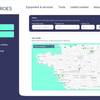Northeast Carbon Hits All-Time High On EPA Power Plants Rules
Carbon permits for the Northeast's carbon market traded as high as $5.10 a ton on Monday, an all time high, following the release of federal rules that will allow states to use markets to meet new emissions targets.
The market's benchmark December 2014 contract traded for $5.10 a ton on the IntercontinentalExchange on Monday before retreating to $5 a ton later in the day, brokers said. The market's spot contract for June delivery also traded for $5 a ton.
On Monday, the Obama administration released regulations calling for the power sector to cut carbon emissions 30 percent by 2030 from 2005 levels. Under the rules, states can use cap-and-trade programs such as the nine-state Regional Greenhouse Gas Initiative (RGGI) to achieve the goals.
"The market had a knee-jerk reaction to the rules this morning," one broker said about Monday's trading.
The release of the rules had less of an impact on California's carbon market where the market's benchmark contract traded for $11.90 a metric tonne, a broker said, the same price that it settled at on Friday.
The rules, issued by Environmental Protection Agency, are expected to create an additional incentive for states to join existing cap and trade programs such as RGGI and California markets.
Despite having implemented a variety of carbon cutting measures, California could have trouble complying with the rule since it is based on the "emissions intensity" of the power it produces, not just its overall carbon emissions.
In 2012, California's emissions intensity was 8 percent higher than it was in 2005 due to the shutdown of a large, carbon-free nuclear power plant in Southern California.
The state has had to rely on natural gas-fired plants to fill the gap, which pushed California's emissions intensity up in recent years, counter to the national trend, said Ashley Lawson, a Point Carbon analyst at Thomson Reuters.
Washington state must make the biggest relative reductions to meet the 2030 target, according to the regulations, followed by Arizona, South Carolina and Oregon.
States that rely heavily on coal for electricity, including Montana, West Virginia and North Dakota, actually have some of the least stringent targets because they are deemed to have less of an ability to transition away from coal toward lower emitting natural gas or carbon-free renewables.
The governors of Washington and Oregon earlier this year said they would move toward pricing carbon emissions, possibly by linking to California's carbon market.
On Monday, Mary Nichols, chair of the California Air Resources Board, which oversees the California market, said she believes the state will exceed its federal targets
"We look forward to working with other states, including Oregon and Washington, in a regional approach to take action to cut carbon pollution and promote the cleanest sources of energy," said Nichols.
(Reporting by Rory Carroll; Editing by Steve Orlofsky)










